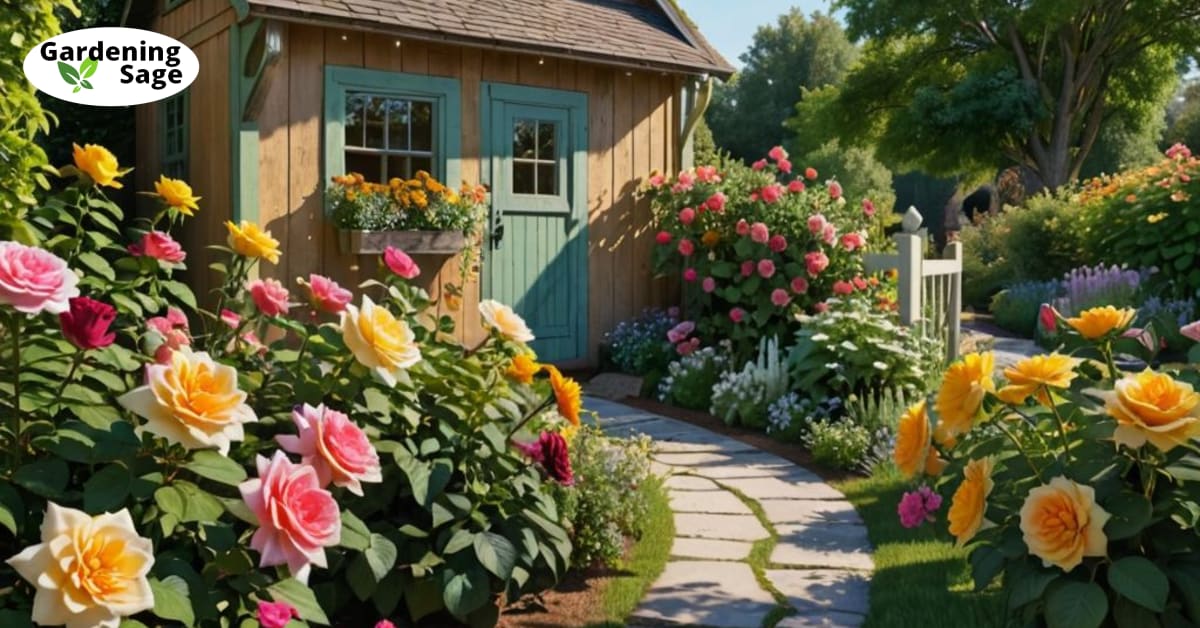Designing Your Dream Flower Garden
Embarking on the journey of creating a flower garden from the ground up, or even reinventing an existing patch of green into a more personalized and stylish sanctuary, can seem daunting. However, with a thoughtful approach to planning and preparation, it’s entirely possible to cultivate a floral haven that is a true reflection of your individuality and aesthetic preferences. To ignite your imagination and transform your yard into a flourishing, blooming work of art, consider these insightful tips.
Choosing the Right Flowers
When deciding which flowers to include in your garden, it’s essential to take into account several key elements:
- Your climate and growing zone – It’s crucial to select flowers that are well-adapted to your region’s weather patterns and soil conditions. This will ensure that your plants not only survive but thrive.
- Sun exposure – Observe and note the patterns of sunlight and shade throughout your yard. This will guide you in choosing plants that are suited to the light conditions they will experience.
- Bloom times – Strategically choose a variety of flowers that bloom at different times throughout the season. This will provide a continuous display of color and interest in your garden.
- Height and growth habit – Create a dynamic and visually appealing space by mixing flowers of varying heights and structures. Consider how they will fill the space as they mature.
- Favorite colors and varieties – Make your garden a source of personal joy by incorporating flowers that you have a particular fondness for. This could be a cherished memory or simply a preference for a certain hue or shape.
Embrace the opportunity to experiment with unique and exotic varieties that catch your eye, as well as incorporating those tried-and-true favorites that you know will perform well in your garden.
Garden Design Elements
With your floral selections in mind, it’s time to envision the structure and layout of your garden. Consider these design elements to enhance the overall aesthetic:
- Focal points – Create an engaging and inviting garden by anchoring your design around a striking tree, an artistic sculpture, a serene water feature, or a bed of brightly hued flowers that draw the eye.
- Balance – Achieve a harmonious look by striving for either symmetrical or asymmetrical balance. This can be done by repeating plant groupings or color schemes throughout the garden.
- Paths – Encourage exploration and movement through your garden with thoughtfully placed paths made of gravel, stone, or brick. These can lead visitors on a journey through the various aspects of your garden.
- Borders – Clearly define different areas within your garden using borders created from natural rocks, bricks, decorative fencing, or neatly pruned hedges. This can help to organize the space and make maintenance easier.
- Vertical accents – Introduce vertical elements such as trellises, obelisks, arbors, or slender trees to add height and depth to your garden. These can also be used to support climbing plants and vines.
Sketching your ideas can be an invaluable tool in visualizing the potential of your garden’s structure before you commit to a final layout. This can also help in identifying any potential issues or adjustments that need to be made.
Preparing the Garden Bed
Once you have a clear vision for your garden’s design, the next step is to prepare the flower beds. This foundational work is key to a successful garden:
- Begin by clearing the area of weeds, rocks, debris, and any plants that are diseased or otherwise undesirable.
- Loosen the existing soil with a shovel or tiller to improve aeration and drainage.
- Enrich the soil by mixing in organic compost or a balanced fertilizer, which will provide essential nutrients and improve soil structure.
- Shape the garden bed to your desired design and install edging materials if you wish to create a more defined border.
- Plan the layout for your plants and flowers, taking into consideration their mature size and how they will fill the space.
Properly preparing the soil is a critical step that provides your flowers with the rich, nutrient-dense foundation they need to flourish.
Planting with Purpose
When it comes time to plant, it’s important to do so with care and consideration:
- Ensure that you are digging holes that are the appropriate size for each plant’s root ball, giving them ample room to establish themselves.
- When removing plants from their containers, do so gently to minimize stress and damage to the roots.
- Backfill the soil around the plants, packing it firmly to eliminate air pockets and provide support for the stems.
- Water the plants thoroughly after planting to settle the soil and hydrate the roots.
- Apply a layer of mulch around the plants to help retain soil moisture, regulate temperature, and suppress weed growth.
Thoughtfully group plants according to their height, color, and blooming times to create a cohesive and visually stunning flower garden. This careful planning will result in a garden that not only looks beautiful but also functions well, with each plant contributing to the overall health and balance of the ecosystem.














